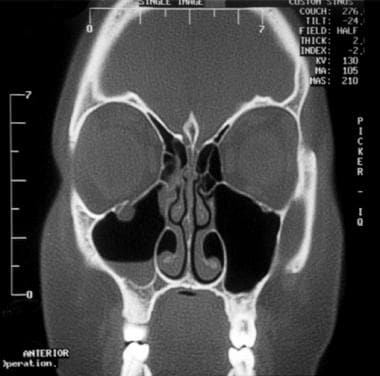

Transconjunctival preseptal approach for orbital floor and infraorbital rim fracture. Clinical recommendations for repair of isolated orbital floor fractures: an evidence based analysis. Surgery of the eyelid, orbit, and lacrimal system. Possible complications include incomplete correction of preoperative enophthalmos or diplopia, eyelid malposition, and optic nerve injury (Journal of the American Medical Association Facial Plastic Surgery 16:290–295, 2014). Postoperatively, the patient is positioned upright and monitored with pupil and vision checks (Surgery of the eyelid, orbit, and lacrimal system, Oxford, 212–217, 220–222, 1995 Journal of the American Medical Association Facial Plastic Surgery 16:290–295, 2014). After the orbital floor is exposed, the limits of the fracture are identified, the entrapped tissue is reduced, and an implant is placed (if necessary).

The transconjunctival preseptal approach has been demonstrated to be an effective approach to gain access to the orbital floor (Journal of Maxillofacial and Oral Surgery 10:301–305, 2011).

It is generally accepted that repair can be delayed up to 2 weeks unless alarming features are noted (e.g., non-resolving oculocardiac reflex), in which case emergent intervention is indicated (Ophthalmology 109:1207–1210, 2002). Indications for surgical intervention include a fracture involving more than ½ of the orbital floor, diplopia extending beyond 7–10 days, extraocular muscle entrapment, and oculocardiac reflex, among others (Surgery of the eyelid, orbit, and lacrimal system, Oxford, 212–217, 220–222, 1995 Ophthalmology 109:1207–1210, 2002). The upper border of the maxillary sinus comprises the orbital floor, and this thin bone is susceptible to damage from trauma.


 0 kommentar(er)
0 kommentar(er)
